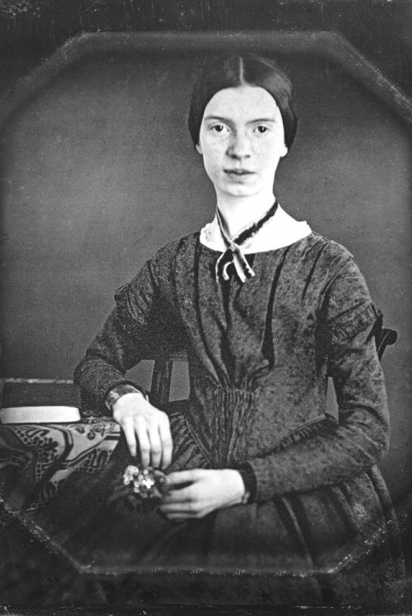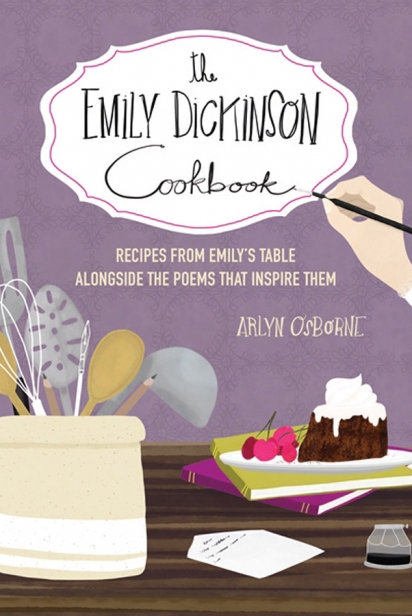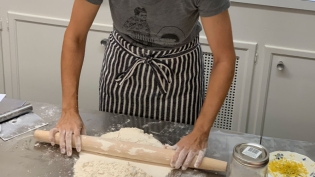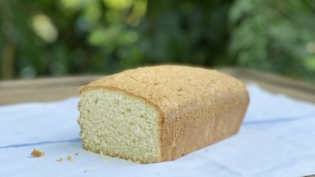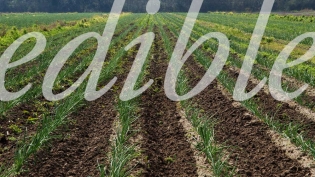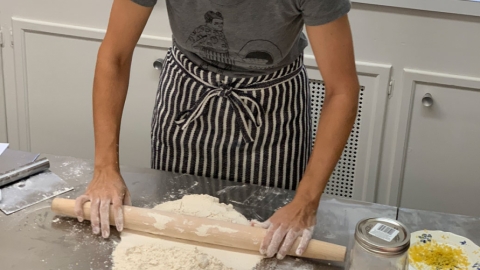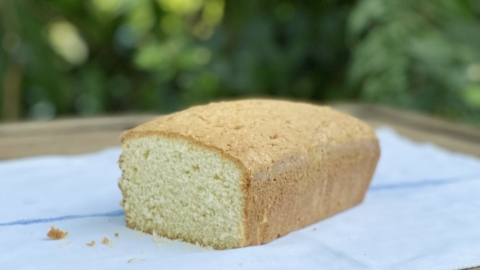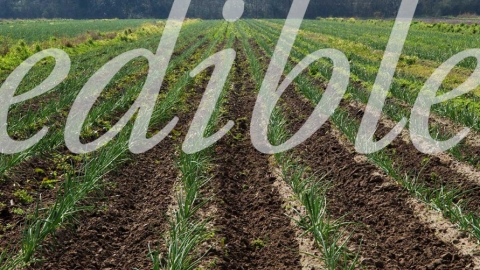With But a Crumb: Emily Dickinson and Baking in the Garden
In the mid-19th century in Amherst, Massachusetts, resident Emily Dickinson was a proud and accomplished baker. She won second prize for her loaf of Indian and rye. She made gingerbread for the neighborhood children. On the back of a yellow wrapper of baking chocolate wrapper, Emily wrote a draft of a poem in her neat round handwriting.
On Mrs. Carmichael’s recipe for Cocoanut Cake were the words to: “The Things that never can come back, are several.”
One of America’s beloved poets, Emily Dickinson is now in the spotlight. Dickinson, the recent television series, wrapped up its third season about the young poet’s coming of age. And a new book, The Emily Dickinson Cookbook: Recipes from Emily’s Table Alongside the Poems That Inspire Them by Arlyn Osborne, pairs her poems with relevant recipes. Osborne, a food writer who is also a history buff, found the project intriguing. “Emily is such an influential and interesting person in so many ways and to specifically explore her identity through food was just something I couldn’t pass up when Quarto [the publisher] presented me with the opportunity.”
During her lifetime in the mid to late 1800s, Dickinson wasn’t known for her poetry, says Osborne. Only 10 poems were published before her death. “To her community, she was widely known for being an incredible cook. She shared food – written recipes, baked goods, her general passion for cooking – much more publicly than she shared her poems. It wasn’t until after she died that she gained fame and recognition as a poet.”
Dickinson also disliked household chores. “She mentions it multiple times in her letters,” Osborne says. “Cooking, however, didn’t seem to be a chore for her. It was a hobby, a form of expression, and her love language, just like poetry.”
In her letters, Dickinson often wrote about food – what she had for breakfast or what Maggie, her maid, was cooking up, says Osborne. She was also connected to nature, and reported on the family vegetable garden, fruit trees, orchards and other crops, and how they progressed through the seasons.” These things really inspired her,” she says. “There are a number of her poems that mention bountiful harvests, corn, apples, pumpkins, fruit. She also used food, really the lack of, in cryptic ways,” writing about hunger, starvation and thirst, which represented her many emotional needs, says Osborne.
In her later years, Dickinson increasingly lived in isolation. During this time, Osborne says, food seemed to serve as a lifeline of sorts. “While she opted out of seeing visitors and community events, she found comfort in cooking,” says Osborne. “Even in the darkest times of her agoraphobia, she not only wanted to cook, she still wanted to share it with others – even if that did mean hiding behind a curtain and lowering a basket of cookies from her window.”
The World of Emily Dickinson
The Emily Dickinson Cookbook: Recipes from Emily’s Table Alongside the Poems That Inspire Them
Food writer Arlyn Osborne’s new cookbook matches Emily’s poems with recipes that are updated for cooks today, including Apple-Butter Glazed Doughnuts, Lemon Verbena Tea Loaf, Emily’s Oval Gingerbread Cakes and Peaches and Cream Pudding. Buy at Books & Books or your local bookseller.
The Emily Dickinson Museum: The Homestead and The Evergreens
Amherst, Massachusetts • emilydickinsonmuseum.org
Expected to reopen in spring 2022 after a major restoration, the museum is made up of two historic houses including the birthplace and homes of Dickinson and her family. You can also see some of the costumes, props and set pieces used in the award-winning series, Dickinson, recently given to the museum.
Dickinson • Apple TV
A contemporary, funny and anachronistic take on the life of Emily Dickinson. Three seasons are available for streaming.
O, Miami Poetry Festival
Every April • omiami.org
Since 2011, the O, Miami Poetry Festival, celebrated during National Poetry Month, seeks to make sure every person in Miami-Dade County encounters a poem – in the sky, in print, online, during events and in all types of creative forms of expression. Join us on April 10 for With But a Crumb – Baking and Emily Dickinson And Cocoanuts! at the Coral Gables Woman’s Club as poetry, food, horticulture and history converge in this program. Hear about Emily Dickinson’s baking and the poems that became a part of it. Lucia Meneses of Dade Heritage Trust’s Baking in Historic Places program will demonstrate how to make her Cocoanut Cake, using the same recipe and methods. Register here.



